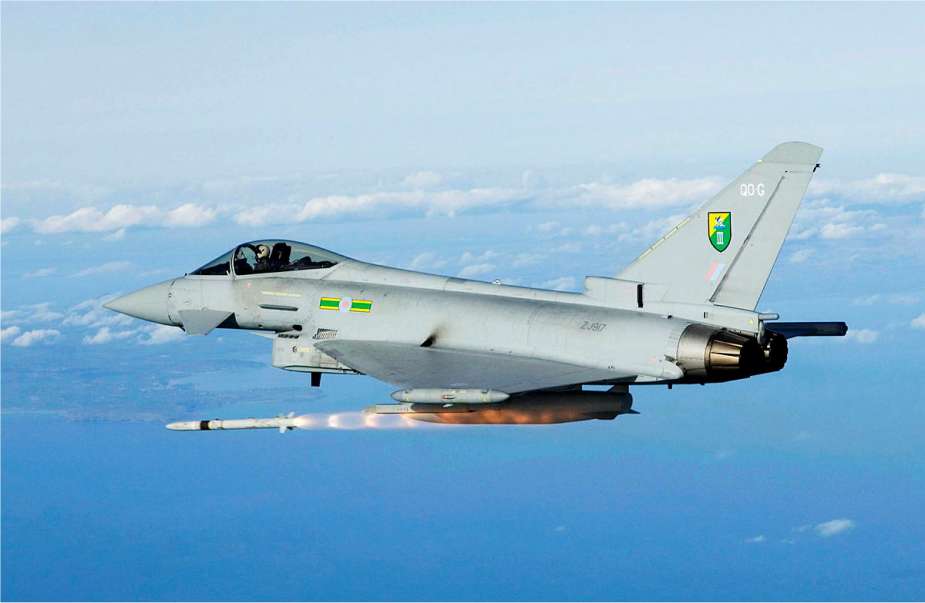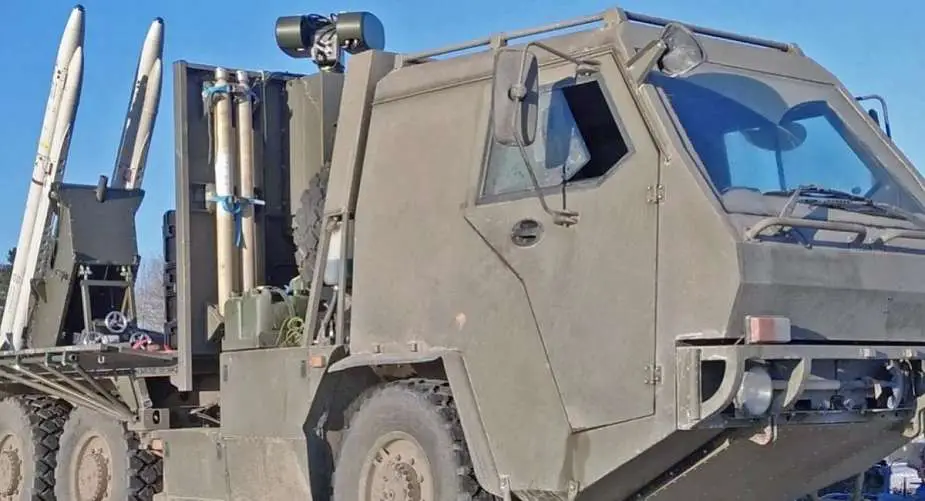Breaking news
Analysis: Technical Review of the Technology of British ASRAAM Air Defense Missiles.
In this analysis, the editorial team at Army Recognition, a leading source of defense and military news, presents a deep analysis of the ASRAAM (Advanced Short Range Air-to-Air Missile) air defense missile. The analysis delves into the development, technical sophistication, operational efficacy, and strategic importance of this advanced missile system.
Follow Army Recognition on Google News at this link

Main technical features of ASRAAM missile. (Picture source UK MoD)
The Advanced Short Range Air-to-Air Missile (ASRAAM) is a significant achievement in modern air-to-air missile technology, developed primarily for the Royal Air Force and Royal Navy of the United Kingdom. The initiative for ASRAAM began in the 1980s, to replace older missiles like the AIM-9 Sidewinder. This development was part of a broader program intended to modernize the air-to-air combat capabilities of Western air forces. The project saw collaboration and input from various countries, although it was primarily a UK-driven initiative.
In terms of design, the ASRAAM stands out for its versatility and advanced features. It employs a high-impulse, solid-propellant rocket motor, which gives it excellent speed and agility. This agility is crucial in close combat situations where split-second maneuvers are necessary. The missile's aerodynamic design also contributes to its nimbleness and speed, making it a formidable weapon in dogfights.
One of the key features of the ASRAAM is its seeker head, equipped with advanced infrared imaging technology. This allows the missile to lock on to the heat signatures of enemy aircraft, providing a high degree of accuracy. The imaging infrared seeker also offers countermeasures resistance, making it difficult for enemy aircraft to evade once locked on. The missile's guidance system is designed to be compatible with various aircraft platforms, allowing for integration with a wide range of fighter jets.
In terms of operational use, the ASRAAM has been adopted by several countries and has seen action in various conflicts. Its performance in real-world scenarios has reinforced its reputation as a reliable and effective air-to-air missile. The missile's capability to engage targets at beyond visual range, as well as at shorter distances, provides pilots with a significant tactical advantage.
Furthermore, the ASRAAM's compatibility with modern fighter aircraft, including the Eurofighter Typhoon and the F-35 Lightning II, ensures its relevance in contemporary air warfare. Its integration into these advanced platforms demonstrates its adaptability and the confidence that various air forces place in its capabilities.

British Air Force 3(F) Squadron RAF Eurofighter Typhoon based at RAF Coningsby, Lincoln, England firing an ASRAAM missile. (Picture source UK MoD)
The Advanced Short Range Air-to-Air Missile (ASRAAM) is a cutting-edge weapon in the realm of modern air-to-air combat, distinguished by its array of advanced technical features. Developed for high-speed, close-quarter dogfights, the ASRAAM encapsulates a blend of sophisticated technologies and design elements.
In terms of physical dimensions, the ASRAAM is a relatively compact missile, which enhances its compatibility with a variety of aircraft. It measures approximately 2.9 meters in length and has a diameter of about 166 millimeters. This size allows for both internal and external carriage on fighter aircraft, offering flexibility in deployment.
The missile's payload is a critical aspect of its design. It is equipped with a potent high-explosive warhead, engineered to ensure effective target neutralization upon impact. The lethality of this warhead is further amplified by a sophisticated proximity fuse. This fuse is designed to detect the proximity of the target and trigger the warhead at the optimal moment, maximizing the damage potential.
ASRAAM's warhead is complemented by an advanced guidance and propulsion system. It utilizes a solid-propellant rocket motor, providing high thrust and enabling the missile to reach impressive speeds. This speed, combined with the missile's agile design, makes it highly effective in rapid, close-range engagements.
The missile's guidance system is another highlight. It features a state-of-the-art infrared imaging seeker, which allows for precise targeting by homing in on the heat signatures of enemy aircraft. This technology not only enhances the missile's accuracy but also provides a robust capability against various countermeasures employed by target aircraft.
ASRAAM's engagement envelope is also noteworthy. It is capable of engaging targets at various altitudes at a maximum range of 25 km, making it a versatile tool in different combat scenarios. Whether in low-altitude engagements or high-altitude confrontations, the ASRAAM can adapt to the tactical demands of the battlefield.
Additionally, the ASRAAM is designed for a "fire-and-forget" type of launch, allowing pilots to fire the missile and then immediately focus on other combat or evasion activities. This feature is particularly beneficial in high-stress combat situations, where pilot workload and situational awareness are critical.

HMT Supacat light truck fitted with ASRAAM missiles launcher station. (Picture source Internet)
In August 2023, reports surfaced of a ground-launched version of the ASRAAM missile being mounted on a Supacat HMT light truck chassis in Ukraine. This new air defense system for Ukraine was a collaborative effort between the British Ministry of Defense and MBDA, a European multinational firm known for its expertise in missile and missile system development and production.
The ground adaptation of the ASRAAM air defense system involves mounting the launcher station on the rear of a Supacat HMT 6x6 light truck chassis, a design developed by the British company Supacat. Positioned towards the front of the vehicle, near the cab, there appears to be a sensor turret, possibly mounted on a telescopic pylon. This allows it to extend above the truck for enhanced visibility. The turret is likely equipped with electro-optical/infrared sensors for target acquisition, and it may also incorporate short-range radar capabilities.
Regarding its range capabilities, the ASRAAM, typically categorized as a short-range missile, boasts an effective engagement range that extends beyond visual range (BVR). This feature enables operators to target threats before they are visually detectable. Based on publicly available information, the missile has a range of up to 25 kilometers and can achieve speeds up to Mach 3.
Defense News January 2024























